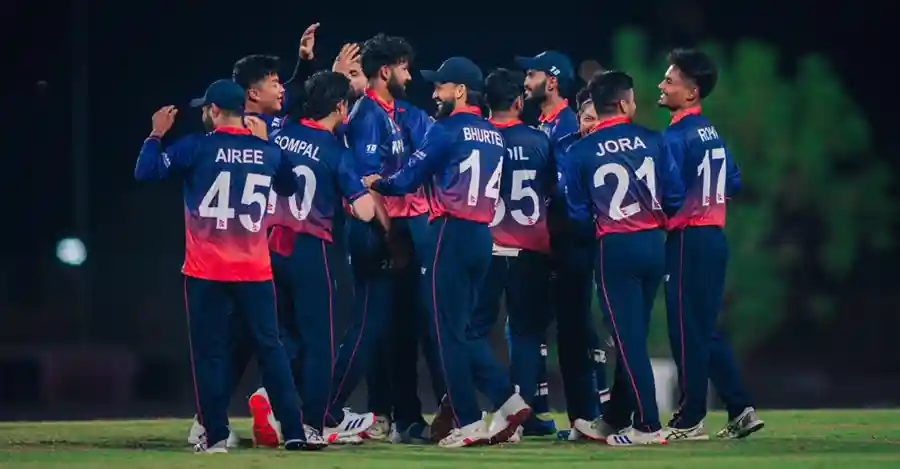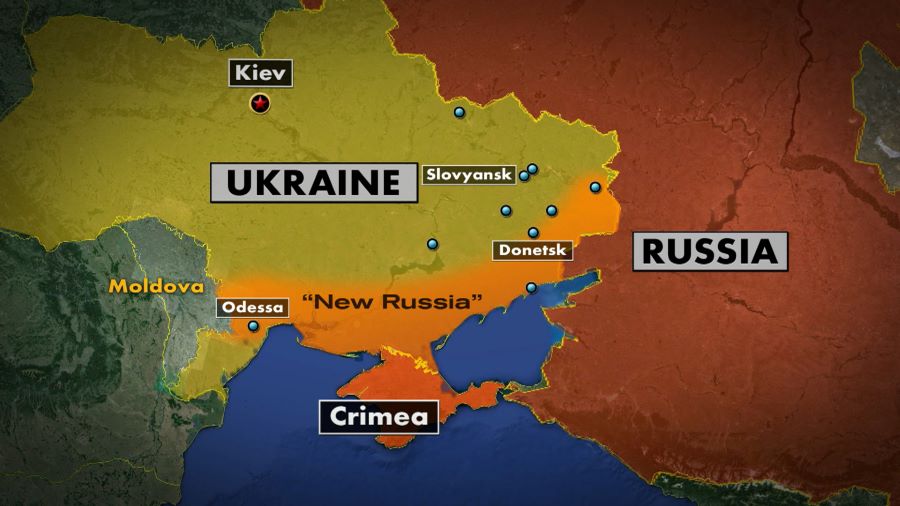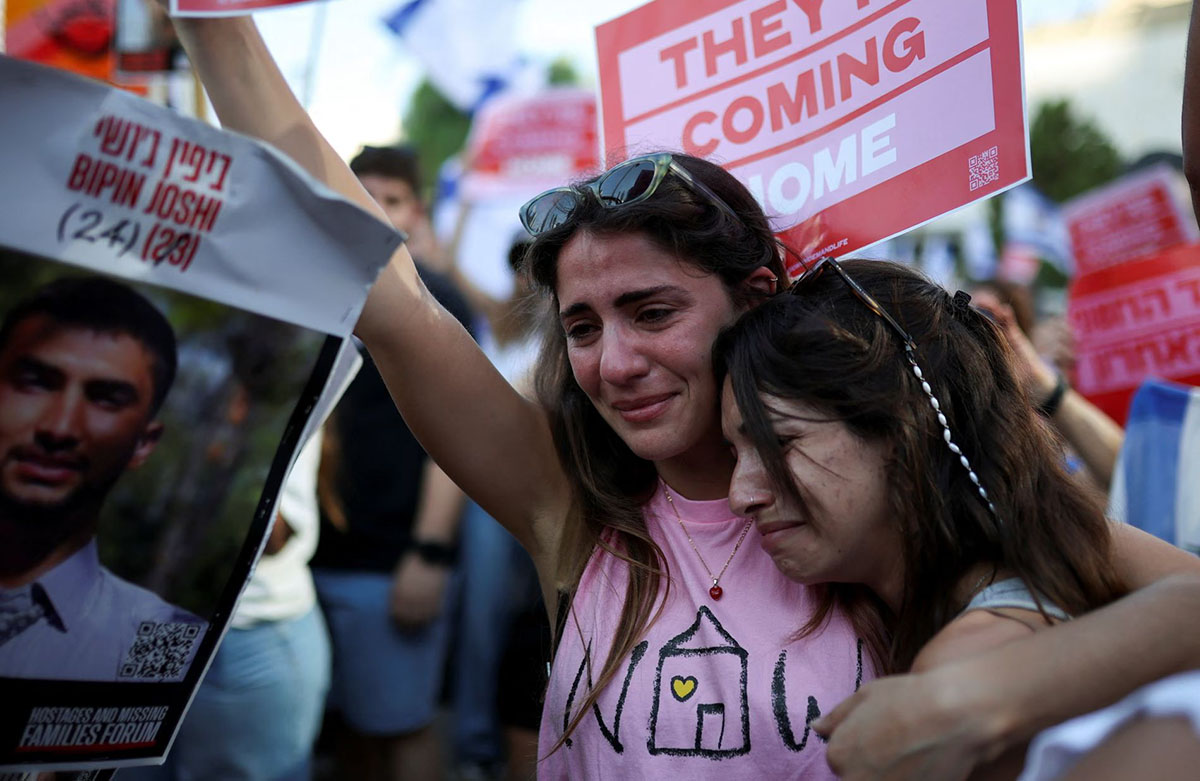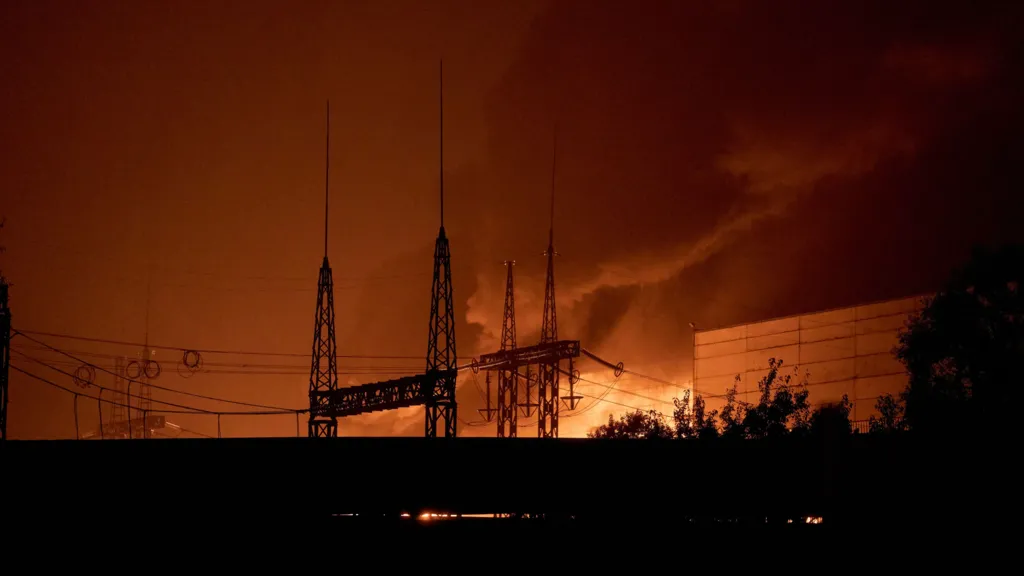Historic Ceasefire Brings Hope: 20 Israeli Hostages Freed After 15 Months in Hamas Captivity. In a moment that brought tears of joy to millions worldwide, 20 Israeli hostages walked free from Hamas captivity on Monday, marking the first successful phase of a historic ceasefire agreement that could finally end 15 months of devastating conflict in Gaza. This breakthrough development represents a ray of hope after nearly two years of brutal warfare that has claimed tens of thousands of lives and shattered families on both sides. However, the fate of Nepal’s Bipin Joshi remains uncertain, leaving his family desperately hoping for answers.
The release unfolded in two dramatic phases throughout the day, with international media broadcasting live coverage as Red Cross vehicles transported the freed hostages to safety and emotional reunions with their families.
Two Phases of Freedom: Who Was Released?
The hostage release occurred in carefully coordinated stages under the watchful eyes of international mediators and the International Committee of the Red Cross.
First Wave: Seven Hostages Return Home
In the initial phase completed early Monday morning, seven Israeli hostages gained their freedom after enduring months of captivity. Among them were two young female soldiers, 22-year-old Matan Angrest and 20-year-old Nimrod Cohen, who were abducted during the October 7, 2023 Hamas attack on Israel.
The group also included five young civilians who were attending the Nova music festival when Hamas terrorists launched their assault. That outdoor concert became one of the deadliest sites of the attack, with hundreds killed and dozens kidnapped.
Second Wave: Thirteen More Freed
Later in the day, thirteen additional hostages were released, including siblings Gali and Ziv Berman (aged 28), Guy Gilboa Dalal (26 years old), Eitan Mor (25 years old), and several other young Israelis. Most of these individuals had been enjoying the Nova music festival when their lives were violently disrupted by the Hamas attack.
The Israeli government released photographs and video footage showing emotional scenes of hostages reuniting with their families, hugging loved ones, and expressing overwhelming relief at finally returning home after their prolonged ordeal.
The Price of Peace: Prisoner Exchange Details
This hostage release forms part of a comprehensive ceasefire agreement negotiated through months of intensive diplomatic efforts involving mediators from Egypt, Qatar, and the United States.
Under the first phase of the agreement, Hamas is releasing 33 hostages (mostly men aged 50 or over and women), while Israel will release 30-50 Palestinian prisoners for every Israeli hostage freed, starting with children and women.
Israel has agreed to release approximately 2,000 Palestinian prisoners as part of this exchange, with about 1,700 expected to arrive at Nasser Hospital in Gaza. Many of these Palestinian prisoners were detained without formal charges following the October 7 attacks.
The exchange ratio demonstrates the high value both sides place on their captured citizens, with Israel willing to release significantly more prisoners than it receives in return.
Medical Care and Psychological Support
Israeli military officials immediately transported the freed hostages to hospitals for comprehensive medical evaluations. After 15 months in captivity, doctors are assessing their physical health, nutritional status, and psychological condition.
Healthcare professionals specializing in trauma and post-traumatic stress disorder have been standing by to provide necessary support. The hostages endured unimaginable stress, uncertainty, and potentially harsh conditions during their captivity, making comprehensive care essential for their recovery.
“This day is a day of joy, relief, and happiness,” stated a spokesperson for Israeli Prime Minister Benjamin Netanyahu, capturing the national mood of cautious optimism mixed with profound relief.
Background: The October 7 Attack That Started It All
The current crisis began on October 7, 2023, when Hamas launched a massive, coordinated attack on southern Israel. The assault resulted in approximately 1,200 Israeli deaths and the abduction of 251 people, including foreign nationals working or studying in Israel.
The attack shocked Israel and the international community with its scale and brutality, targeting not just military installations but civilian communities, including kibbutzim, towns, and the Nova music festival.
In response, Israel launched an extensive military campaign in Gaza aimed at dismantling Hamas’s military capabilities and recovering hostages. According to Gaza health authorities, more than 67,000 Palestinians have been killed in the ensuing conflict, though these figures cannot be independently verified and may include Hamas combatants.
What’s Next: Future Phases and Challenges
The current release represents only the first phase of what negotiators hope will become a comprehensive peace process. Under the agreement, a total of 48 hostages are expected to be freed, including 20 living hostages and 28 bodies of those who died in captivity.
However, significant challenges remain. The ceasefire agreement is structured in multiple phases, with each subsequent phase dependent on successful implementation of previous stages. Trust between the parties remains fragile after months of intense conflict.
International Diplomatic Efforts
US President Donald Trump is scheduled to address the Israeli parliament, the Knesset, in a speech that many are calling a “signal of the Gaza war’s end.” This high-profile visit underscores American involvement in brokering the ceasefire.
Meanwhile, international mediators are organizing a peace conference in Sharm el-Sheikh, Egypt, scheduled for Tuesday. Leaders from more than 20 countries will participate in discussions aimed at establishing a sustainable path toward permanent peace and addressing Gaza’s humanitarian crisis.
The conference will tackle challenging issues including reconstruction of Gaza, long-term security arrangements, and the political future of Palestinian territories.
Palestinian Perspective: Hope and Celebration
The ceasefire and prisoner exchange also brings hope to Palestinian families who have endured their own agonizing separations. In Gaza and the West Bank, Palestinians prepared celebrations for the return of their loved ones.
Humanitarian organizations report that Gaza’s infrastructure has been devastated by 15 months of warfare, with hospitals, schools, and residential areas heavily damaged. The ceasefire allows for the first significant influx of humanitarian aid in months, potentially easing the desperate situation of Gaza’s civilian population.
Palestinian officials and families view this exchange as validation of their long struggle for recognition and justice, though perspectives vary widely on whether this ceasefire can lead to lasting peace.
Nepal’s Missing Son: The Heartbreaking Case of Bipin Joshi
Tragically, Nepal’s Bipin Joshi, an agricultural student who came to Israel through the “Learn and Earn” program, was abducted from Kibbutz Alumim on October 7, 2023. His fate remains uncertain, casting a shadow over the celebrations.
Bipin Joshi was part of a group of Nepali students studying agriculture in Israel. Ten other Nepali students were killed during the October 7 Hamas assault, making the attack particularly devastating for Nepal.
Family’s Desperate Plea
Joshi’s mother and sister traveled to Israel in August 2025, making their first visit since his abduction. They have campaigned tirelessly for international attention to his case, meeting with Israeli officials and speaking at gatherings in Tel Aviv’s “Hostages Square.”
The last confirmed evidence of Joshi was security footage from Gaza’s Shifa Hospital on the day of the massacre, showing him being led by Hamas gunmen alongside a Thai national who was also abducted.
No Confirmation of Status
Critically, Bipin Joshi’s name does not appear on the list of 20 hostages released in this first phase. More troubling, Israeli military officials have indicated they believe he may not have survived captivity, though this has not been definitively confirmed.
His name has not appeared on the list of deceased hostages whose bodies are expected to be returned either, leaving his family in agonizing uncertainty. They continue to hope for his return, refusing to give up on their son despite the grim assessments from Israeli authorities.
The Joshi family’s plea represents the anguish of all families still waiting for news about loved ones held in Gaza. For comprehensive coverage of international developments, visit Singha Darbar for the latest updates on this evolving story.
Can This Ceasefire Hold? Expert Analysis
Security analysts and Middle East experts express cautious optimism about the ceasefire but warn that significant obstacles remain. Previous ceasefire attempts during this conflict lasted only days before collapsing amid accusations of violations from both sides.
Key factors that will determine success include:
Trust and Verification: Both parties must fulfill their commitments transparently, with international monitors verifying compliance.
Humanitarian Access: The agreement must allow sufficient aid to reach Gaza’s desperate civilian population while preventing materials from reaching Hamas’s military wing.
Political Will: Leaders on both sides face domestic pressure from hardliners who oppose any compromise with their enemies.
Third Phase Negotiations: The most difficult issues – including permanent security arrangements, governance of Gaza, and long-term political solutions – remain unresolved and will be addressed in future negotiation phases.
Messages of Hope from Released Hostages
Initial reports from freed hostages describe a mixture of relief, trauma, and concern for those still in captivity. Many expressed gratitude for their release while emphasizing the urgent need to secure freedom for remaining captives.
Israeli families who still have loved ones held by Hamas view this first release as encouraging but incomplete. They continue advocating for a comprehensive agreement that brings everyone home.
The Road Ahead: Questions That Remain
As celebrations continue and freed hostages begin their long recovery process, fundamental questions about the region’s future remain unanswered:
- Will all remaining hostages be successfully released in subsequent phases?
- Can humanitarian aid reach Gaza’s population effectively?
- What will happen to Gaza’s governance once the conflict ends?
- Can Israel and Hamas maintain this ceasefire long enough to negotiate permanent peace?
- What fate awaits Bipin Joshi and others whose status remains unclear?
A New Beginning or Temporary Pause?
Israeli and Palestinian families on both sides view this moment as potentially historic – either a genuine new beginning toward peace or simply a temporary pause in endless conflict. Their hopes and fears reflect the profound complexity of this decades-old dispute.
The successful release of these first 20 hostages provides tangible proof that diplomacy can work, even in the most intractable conflicts. However, transforming this initial success into lasting peace will require sustained commitment, international support, and willingness from all parties to make difficult compromises.
As the world watches this fragile ceasefire unfold, one thing remains certain: the path to permanent peace will be long, challenging, and require overcoming deep-seated mistrust built over decades of conflict.




















Comments